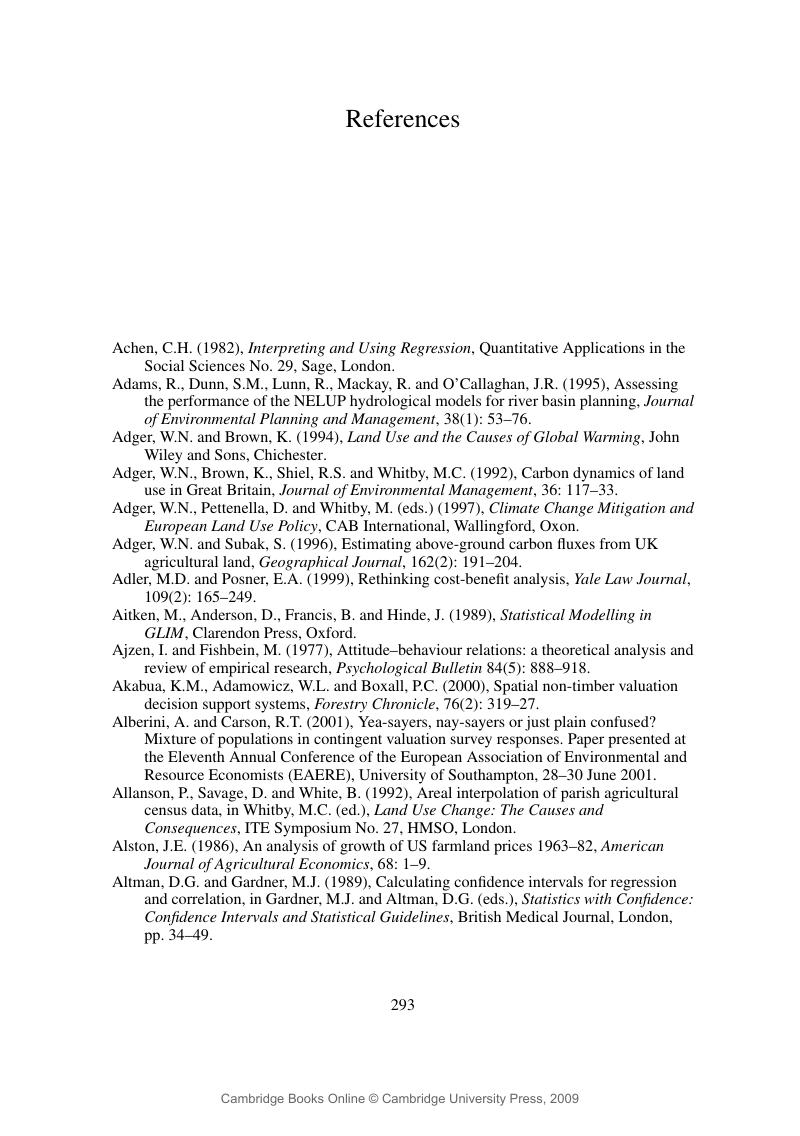Book contents
- Frontmatter
- Contents
- List of plates
- List of figures
- List of tables
- Foreword by David W. Pearce
- Preface
- Acknowledgements
- 1 Introduction
- 2 Recreation: valuation methods
- 3 Recreation: predicting values
- 4 Recreation: predicting visits
- 5 Timber valuation
- 6 Modelling and mapping timber yield and its value
- 7 Modelling and valuing carbon sequestration in trees, timber products and forest soils
- 8 Modelling opportunity cost: agricultural output values
- 9 Cost-benefit analysis using GIS
- 10 Conclusions and future directions
- References
- Index
- Plate Section
- References
References
Published online by Cambridge University Press: 22 September 2009
- Frontmatter
- Contents
- List of plates
- List of figures
- List of tables
- Foreword by David W. Pearce
- Preface
- Acknowledgements
- 1 Introduction
- 2 Recreation: valuation methods
- 3 Recreation: predicting values
- 4 Recreation: predicting visits
- 5 Timber valuation
- 6 Modelling and mapping timber yield and its value
- 7 Modelling and valuing carbon sequestration in trees, timber products and forest soils
- 8 Modelling opportunity cost: agricultural output values
- 9 Cost-benefit analysis using GIS
- 10 Conclusions and future directions
- References
- Index
- Plate Section
- References
Summary

- Type
- Chapter
- Information
- Applied Environmental EconomicsA GIS Approach to Cost-Benefit Analysis, pp. 293 - 331Publisher: Cambridge University PressPrint publication year: 2003



